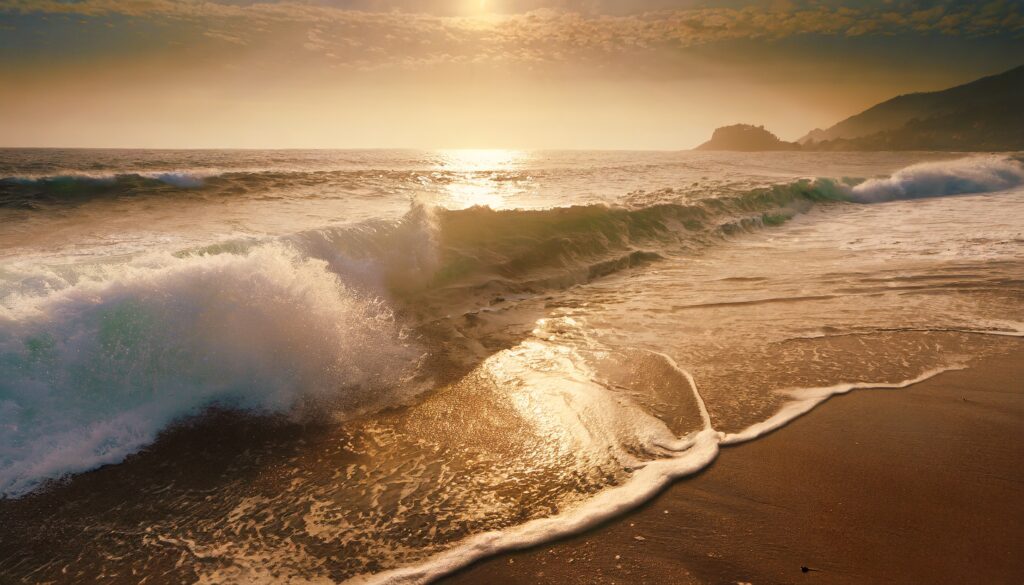Understanding the Weather and Its Impact on Surf Conditions
First things first, to understand the influence of weather on surfing conditions, it’s important to have a rudimentary comprehension of how exactly waves form. Each wave starts as a ripple, generated purely by the energy transferred from wind brushing across the water’s surface. Due to this, factors such as wind strength, its consistency, and the length of time it blows across the ‘fetch’ (an uninterrupted stretch of water the wind blows across), all play integral roles in determining the size and quality of waves. Strong, consistent winds blowing over long fetches can indeed lead to the creation of higher, more powerful waves that surfers often crave.
The Role of Wind in Creating Waves
Breaking the concept down further, wind plays three major roles in surf conditions: making waves, grooming waves, and affecting how surfable the waves are. Firstly, as just discussed, wind on open water initiates wave generation. Secondly, onshore winds (blowing from the sea towards the land) can help ‘groom’ waves into a clean and neat order, often resulting in ‘sets’ of waves that surfers appreciate. However, too much onshore wind can cause messier conditions, known as ‘chop’. Lastly, the wind velocity on the beach can alter the challenge of surfing, for instance, a strong offshore wind (blowing from land to sea) can make waves harder to catch but can increase wave quality by shaping them into a more rideable form.
How Atmospheric Pressure Affects the Surf
Understandably, changes in atmospheric pressure can influence wave conditions. Low-pressure systems can generate stronger winds due to the steeper pressure gradient and hence result in larger waves. However, the influence of pressure systems is more prominent in the ripples created in the open ocean (called swells) that can travel vast distances to deliver sizeable, quality surf when they reach shallow waters, where they morph into breaking waves. Therefore, surfers often monitor pressure patterns to anticipate a good swell.
The Impact of Weather Fronts on Surf Conditions
Besides the pressure systems, weather fronts also have a direct impact on surf conditions, as they separate distinct air masses. Warm fronts result from warm air displacing cooler air and often produce long-period swells ideal for surfing, while cold fronts result from colder air displacing warmer air and their abrupt occurrence can produce sudden and potentially dangerous surf conditions. Therefore, being aware of impending fronts can help surfers stay safe and score some unforgettable rides.
The Seasonality of Surf: Surfing Across Different Seasons
Seasonality also bears a significant influence on surfing conditions. Different times of the year bring varying weather conditions, leading to changes in wave dynamics. For instance, winter storms often produce stronger winds and potentially larger waves, whereas summer conditions often lead to smaller, more manageable surf for beginners. Also, specific wind patterns and storm tracks related to particular seasons can provide better conditions on certain coastlines. Therefore, many surfers travel globally to take advantage of seasonal variations in surf conditions.
The Role of Sunshine and Rain on the Surf: Myth or Fact?

And, what about sunshine and rain you may ask? Well, while it doesn’t directly affect the wave conditions, the intensity of sunshine can impact the sea temperature, and in turn, the beach and wind temperatures, altering atmospheric pressure gradients and potentially affecting wind conditions. Heavy rain, on the other hand, can influence the structure of the ocean floor through coastal run-off, changing the way waves break. These changes might be temporary but can make a significant difference to surf conditions.
Weather Forecasting and Predicting Good Surf
Weather forecasting has indisputably become a crux for surfers, showering them with invaluable information about approaching swells, wind direction, and changes in weather patterns. Websites and apps have made it simpler than ever to track and digest this information, enabling surfers to be at the right place at the right time, with maximum surf stoke guaranteed.
The Perfect Weather Conditions for Surfing
If you’re wondering about the “perfect weather conditions for surfing,” it, in reality, depends on personal preferences. Some surfers live for intense weather conditions that generate monstrous waves, while others prefer a sunny day with gentle, rolling waves. Nonetheless, the generally agreed-upon ideal conditions include a decent swell generated by a distant storm, a long-lasting, constant wind, and a clear, sunny day.
Adapting Surf Strategy to Weather Conditions
In conclusion, knowing how to interpret the influence of weather on surfing conditions can significantly improve your wave-riding experience. The interplay of different elements like wind, atmospheric pressure, weather fronts, and seasonal changes all contribute to the dynamic nature of the waves and the surfing conditions that we experience.
Recognizing the role of the sunshine and rain may seem marginal, but these factors, too, can provide a different perspective to your surfing adventures. Harnessing technology and using weather forecasting tools, you’re enabling yourself not just to predict good surf, but also to understand nature’s rhythm better. As surfers, understanding these rhythms becomes the essence of our connection with the ocean.
Navigating the ocean and riding its waves is as much about adapting to sea conditions as it is about personal skill and courage. The “perfect weather conditions for surfing” can be a misnomer since every surfer has unique preferences that cater to their skills, experiences, and thrill-seeking levels. Some might cherish the adrenaline rush from surfing in high-intensity weather conditions, while others might find solace in the calm, steady waves on a sunny day.
The heart of surfing lies in resonating with the forces of nature and adapting your surf strategy to whatever the weather and wave conditions might be on any given day. Comprehending and respecting the weather’s impact on surf conditions is not just about being in sync with nature; it’s about ensuring your safety and maximizing your enjoyment in the vast, unpredictable, yet fascinating realm of surfing. So the next time you plan to catch some waves, don’t forget to check the weather and let it guide your surfing strategy. Remember, as surfers, we don’t just ride the waves; we ride the moods of the sea, shaped and reshaped by the weather. Join to a Surf School is a good way to start understanding the waves.
